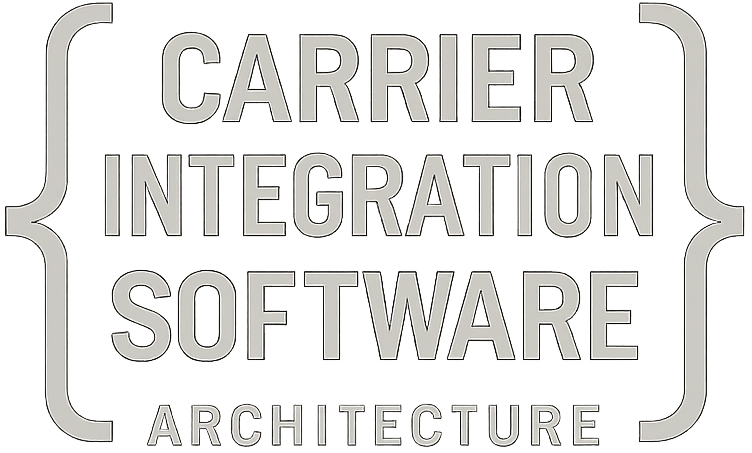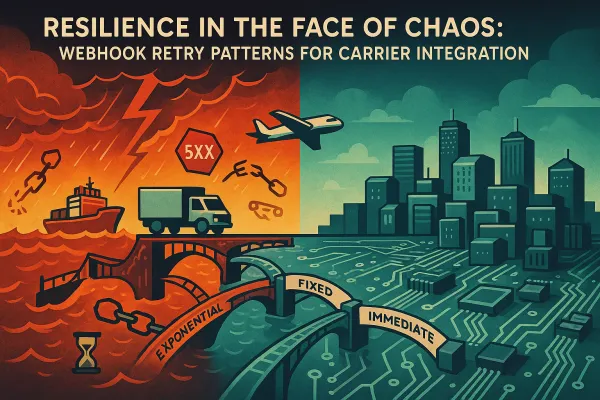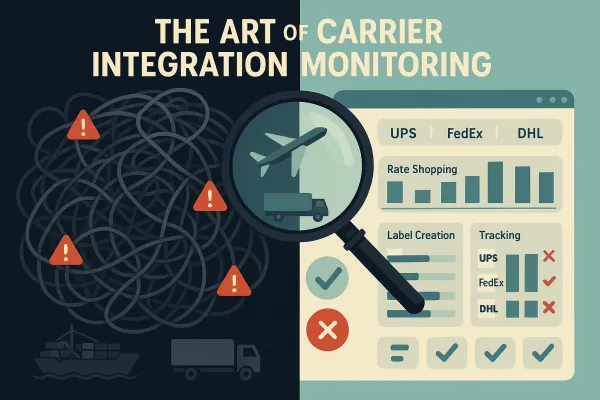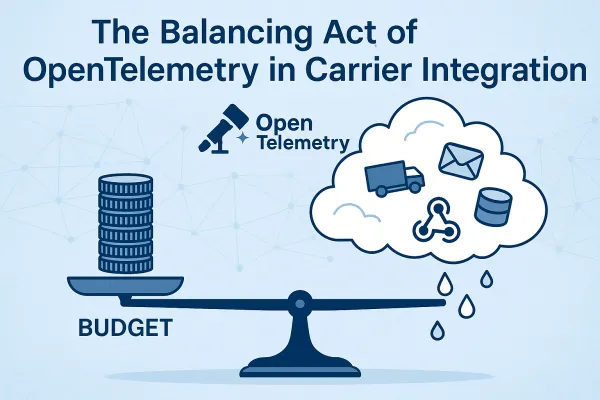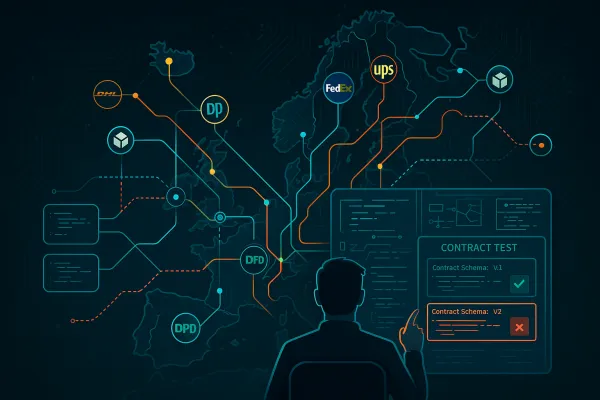API Deprecation Early Warning Systems for Carrier Integration: Detecting Breaking Changes Before They Break Shipments
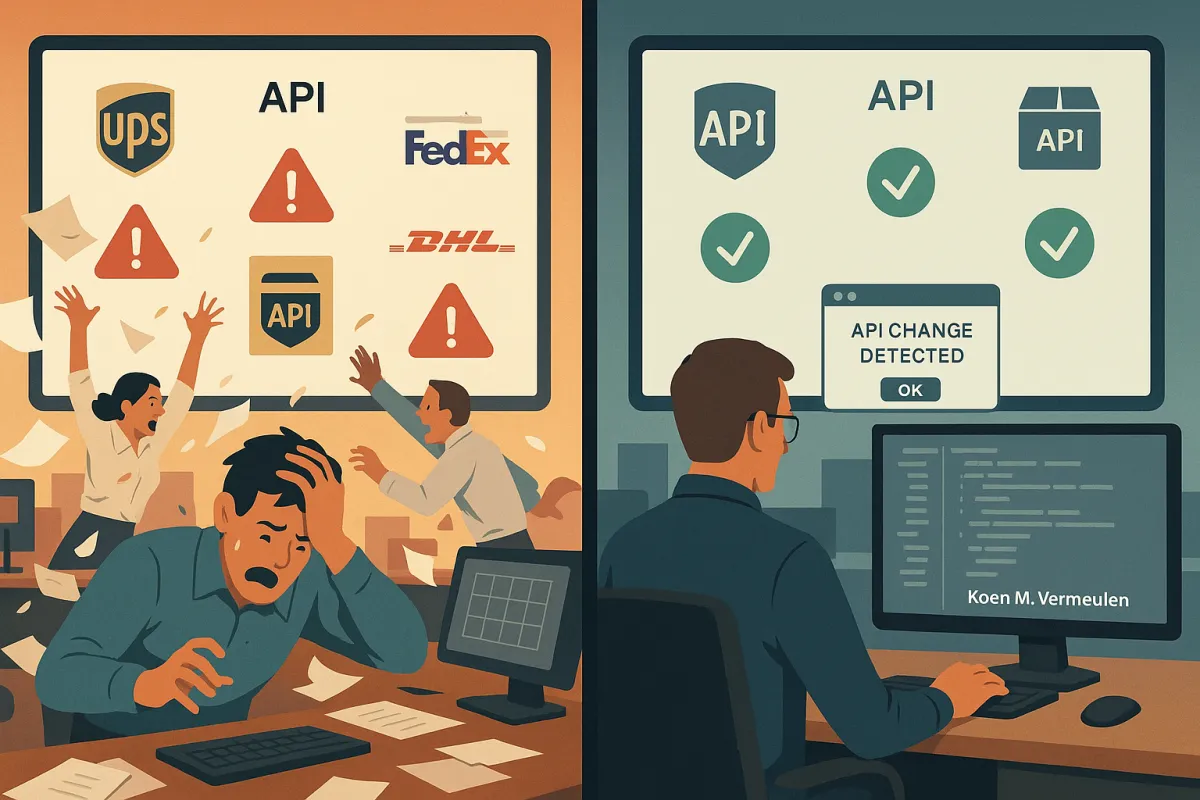
UPS replaced its entire existing API infrastructure, deprecating access key-based authorization in favor of OAuth 2.0 security models, with post-June 3, 2024, any transaction with UPS mandating this new OAuth security model. FedEx announced on August 18, 2022 that previous FedEx Web Services WSDLs are heading for retirement, giving developers until May 15, 2024 to adopt the improved FedEx API, at which point previous SOAP APIs became completely inaccessible. These aren't isolated incidents. Across the companies that have high levels supply chain visibility reduce their logistics costs up to 20% landscape, carrier API changes happen regularly, often with minimal warning.
The problem? Most carrier integration software connects you to numerous carriers through one seamless API platforms lack systematic approaches to detecting these changes before they break shipments. You discover deprecation when labels stop printing, tracking fails, or rate shopping returns empty results. By then, customer deliveries are already at risk.
The Anatomy of Carrier API Deprecation Patterns
Carriers rarely announce breaking changes the way software companies do. The HTTP Deprecation response header can be used to signal to consumers of a URI-identified resource that the use of the resource has been deprecated. According to the recently released RFC 9745, the field should be an RFC 9651 Date, which is expressed in Unix time. Yet most shipping APIs still rely on email notifications, PDF announcements buried in developer portals, or informal communications through account managers.
The three most common deprecation patterns we see:
Header-Based Warnings: Modern carriers increasingly use Sunset headers to indicate when the sunset will occur, often coupled with the deprecation header to give a full picture of the API's end-of-life. FedEx's REST APIs, for example, include deprecation timestamps in response headers months before enforcement dates.
Response Format Changes: Carriers might maintain endpoint availability while subtly changing response schemas. A field that previously returned a string suddenly becomes an integer, or required fields become optional. These changes don't trigger obvious failures but gradually corrupt data quality.
Authentication Model Shifts: UPS has deprecated access key authentication in favor of an OAuth 2.0 security model for all APIs. Beginning August 5, 2024, access keys will no longer be supported. Similar transitions affect integration stability even when functional endpoints remain unchanged.
Building the Detection Layer: Monitoring Infrastructure
Automated deprecation detection requires monitoring both explicit signals and implicit changes. Here's how to build comprehensive coverage:
Header Parsing and Alerting: Warning headers with 299 codes can specify deprecation messages like "Deprecated API: use betterapi.blazingFrog.com instead. Old API maintained until 2015-06-02" Your monitoring should parse these headers systematically. Configure log aggregation to capture deprecation headers from all carrier API responses, not just error conditions.
Response Time Trending: Gradual performance degradation often precedes formal deprecation announcements. You can check metrics by navigating to the metrics endpoint. To see the status of alerts visit the alerts endpoint. Implement Prometheus metrics that track P95 response times for each carrier endpoint over 30-day rolling windows.
Schema Validation Monitoring: Deploy continuous schema validation against carrier responses. When field types change or required fields become optional, your validation layer should trigger alerts before these changes impact production workflows. This catches "soft deprecations" where endpoints remain functional but behavioural contracts change.
Proactive Response Patterns: From Detection to Action
Detection alone isn't sufficient. You need automated workflows that respond to deprecation signals by testing alternatives and preparing migration paths.
Automated Successor API Testing: When deprecation headers include successor API references, automatically provision test environments that validate new endpoint functionality. The deprecation header provides a runtime warning to consumers of your API. This can be more useful than updating your OpenAPI given that API consumers usually don't check your docs after they are done integrating. Schedule daily tests against successor APIs using production-representative data to identify compatibility issues early.
Fallback Chain Validation: For multi-carrier integration platforms like Cargoson, nShift, or ShipEngine, implement fallback testing where deprecated carriers are temporarily removed from routing logic to validate alternative coverage. This prevents scenario where your primary carrier's deprecation leaves entire shipping corridors without coverage.
Customer Communication Pipelines: Build automated workflows that generate customer communications when deprecation affects their specific carrier usage patterns. Rather than broadcasting generic maintenance notices, analyse which customers use deprecated endpoints and craft targeted migration guidance.
Multi-Tenant Considerations: Isolating Impact
In carrier integration software companies can manage multiple carriers with ease - the end result of which is efficient and timely deliveries that enhance customer loyalty. With carrier management softwares companies are able to select optimal cost carriers via automation environments, deprecation events must be isolated to prevent cascade failures across customer environments.
Tenant-Aware Routing: Implement circuit breakers that operate at tenant granularity. When a carrier API deprecation affects one customer's integration, the circuit breaker should prevent that failure from impacting other tenants sharing the same infrastructure. This requires routing logic that can dynamically exclude problematic carrier-tenant combinations while maintaining service for unaffected tenants.
Graceful Degradation Patterns: Design your integration layer to automatically substitute deprecated carrier endpoints with functional alternatives when possible. For rate shopping, this might mean excluding deprecated carriers from quote comparisons. For tracking, it could involve switching to backup tracking providers when primary carriers experience deprecation-related outages.
Tenant Notification Isolation: Different customers have different tolerance levels for carrier changes. Enterprise customers might need 90-day migration windows, while smaller customers prefer automatic handling. Build notification systems that respect per-tenant deprecation handling preferences.
Implementation Blueprints: Code and Configuration
Here's a practical implementation using Prometheus metrics that track specific conditions. For the sake of this tutorial we will alert when the ping_request_count metric is greater than 5. monitoring tools:
Prometheus Metrics Configuration: Define custom metrics for carrier API health that include deprecation status as labels. The software allows you to create alerts for any performance metric. Middleware sends you accurate alerts in real-time. You can customize the alert threshold per your needs. Monitor deprecation header presence, response time degradation, and schema validation failures as separate metric streams.
Log Parsing Rules: Configure your logging infrastructure to extract deprecation signals from carrier API responses. Use structured logging that captures deprecation timestamps, successor API URLs, and affected endpoint patterns. This creates queryable data that feeds your alert routing logic.
Alert Routing Workflows: Alertmanager supports various receivers like email, webhook, pagerduty, slack etc through which it can notify when an alert is firing. Set up alert routing that escalates based on deprecation timeline urgency. Immediate alerts for 30-day deprecations, weekly summaries for 6-month timelines, and quarterly reviews for annual deprecation cycles.
Integration Compatibility: For platforms like Cargoson, EasyPost, and nShift, ensure your deprecation detection works within existing middleware architectures. Middleware is a full-stack, cloud-native observability platform that supports IT monitoring because of its infrastructure monitoring capabilities. The tool helps identify issues and track down the root causes behind them across the entire IT infrastructure rather than requiring separate monitoring stacks.
Measuring Success: SLOs for Deprecation Response
Define measurable objectives for your deprecation early warning system:
Time-to-Detection SLI: Measure the time between carrier deprecation announcement and your system's detection. Target: 95% of deprecations detected within 24 hours of announcement or header deployment. This requires monitoring carrier developer portals, processing email notifications, and parsing API response headers continuously.
False Positive Rate: Track alerts that don't lead to actual deprecation events. This might be because we've made a typo in the metric name or label filter, the metric we ask for is no longer being exported. Prometheus will not return any error in any of the scenarios above because none of them are really problems. There's no distinction between "all systems are operational" and "you've made a typo in your query". Aim for false positive rates below 5% to maintain alert credibility.
Migration Completion Velocity: Measure time from deprecation detection to successful migration testing. For critical carrier integrations, target completion within 14 days of detection. This includes automated successor API validation, tenant impact assessment, and fallback route verification.
Customer Impact Prevention: The ultimate success metric: zero customer-affecting outages due to undetected API deprecations. Track this as a monthly rolling measurement, with error budgets that account for acceptable maintenance windows versus surprise deprecation events.
Building effective API deprecation early warning systems transforms carrier integration from reactive fire-fighting to proactive platform management. Many shipper companies still don't seem to have gotten the memo that complying with FedEx's and UPS's new API access requirements isn't going to be quick or easy. That's why it's important to let companies know that they can't wait until the last minute to begin upgrading. The investment in monitoring infrastructure pays dividends through reduced downtime, smoother customer experiences, and more predictable platform operations.
Your carrier integration software isn't just connecting APIs—it's managing a complex web of evolving external dependencies. Treat deprecation detection as a core platform capability, not an operational afterthought.
